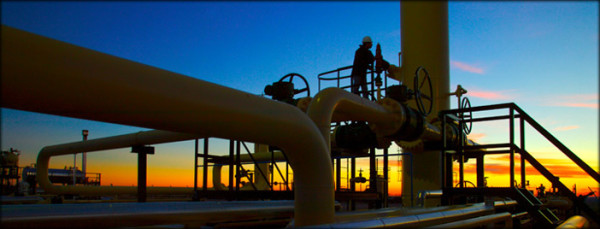US oil and gas player Apache has made what is being feted by some as potentially Australia’s largest oil discovery in the last 30 years, fuelling hopes of a new oil province located off the north-west coast.
The field found by the Phoenix South-1 well, which was targeting gas rather than oil, could have potentially up to 300 million barrels of oil in place, according to Apache. Only a portion of that volume, however, would be recoverable, analysts said.
The news put a rocket under the shares of one of Apache’s junior partners in the drilling venture, Carnarvon Petroleum, which almost trebled to 24¢ on Monday.
But the $157 million surge in the oil and gas minnow’s market value was seen as overblown by some analysts, given the very early analysis of the drilling results.
“It looks a bit punchy based on the facts we’ve got today,” one analyst said. “There are still a lot of unanswered questions here.”
Still, Apache’s chief operating officer for its international business, Thomas Voytovich, said the results from the drilling so far “point to a commercial discovery,” while also voicing caution about the early stages of the work.
“If these results are borne out by further appraisal drilling, Phoenix South may represent a new oil province for Australia,” Mr Voytovich said.
Apache immediately committed to drilling a second well, in an adjacent permit, to take place in 2015. That well will target a larger prospect, named Roc.
Apache also exercised an option to take up 40 per cent of two other nearby permits.
Carnarvon managing director Adrian Cook described the Phoenix South find as “one of the most significant developments in Australian oil and gas in recent times”.
But he said it was premature to estimate how large the find may be.
“We need more time to interpret the science,” Mr Cook said.
“We’re all excited but appreciate there’s some ways to go. We have to be careful. It’s very easy to let enthusiasm get away from the facts.”
However, the facts known so far, are compelling in that the discovery is oil rather than gas, and that the oil is a high-grade “light” quality that should be both easier to produce and attracts premium prices, analysts said.
Yet to be determined, however, is the ability for oil to flow from wells, how the oil could be developed given the isolation of the region off the Port Hedland coast, and the cost.
The find is the first oil discovery in the offshore part of Western Australia’s Canning Basin, sandwiched between the Carnarvon Basin, prolific for both oil and gas, and the Browse Basin further round the coast, which has yielded several giant gas discoveries.
StockAnalysis principal Peter Strachan said that from the results so far, the discovery could hold up to 60 million barrels of recoverable oil. The well is still being drilled deeper, so may end up being larger, while the size of the offshore Canning Basin, also known as the Bedout Sub-Basin, signals the potential for further similar finds, he noted.
Most oil discoveries in Australia recently have been in the sub-30 million-barrel range, so anything bigger is significant, although is “only a drop in the ocean” considering the country currently has to import about 60 per cent of its oil liquids requirements, Mr Strachan said.
“Of course, we’re next exporters of gas, through LNG, of coal and uranium, but oil is the most valuable,” he said.
Japan’s JX Nippon and unlisted Finder Exploration also each own 20 per cent of the WA-435-P drilling venture. Apache owns 40 per cent and is the operator.
Carnarvon’s Mr Cook said the find was “the most significant new oil play in the North West Shelf since Woodside Petroleum’s Enfield discovery opened up the Exmouth Basin almost 20 years ago.”
“The implications on the rest of our acreage are still being assessed but the potential is extraordinary,” he said.
The Bedout Sub-Basin has seen growing interest from explorers in recent years, with Woodside and Shell picking up other permits in the area with commitments to spend over $500 million in exploration, according to Carnarvon.
Mr Strachan estimated the oil field could cost about $1 billion to develop using a floating production vessel producing 20,000-25,000 barrels per day of oil. Initial investment costs could be about $500 million, he said.
Source: WA Today
